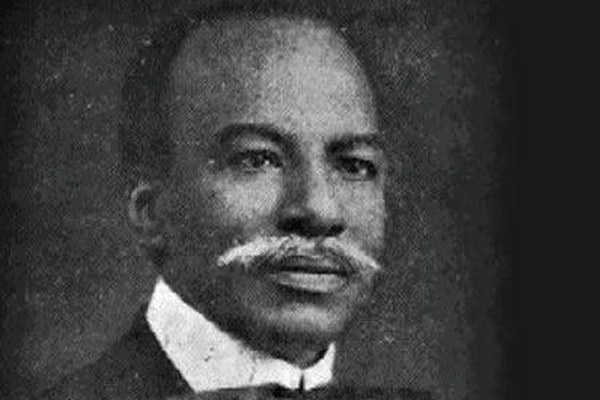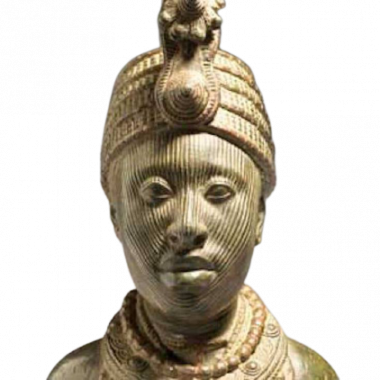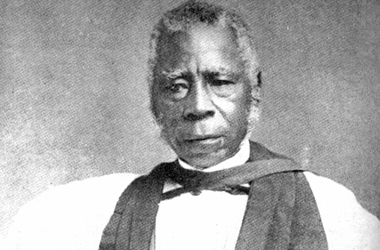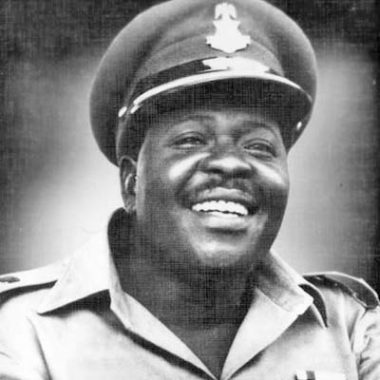
HERBERT OLAYINKA MACAULAY
HERBERT OLAYINKA MACAULAY
14 NOVEMBER 1864 – 7 MAY 1946
Herbert Macaulay was born in Broad St., Lagos on 14 November 1864 to the family of Thomas Babington Macaulay and Abigail Crowther. His parents were children of people captured from what is now Nigeria, resettled in Sierra Leone by the British West Africa Squadron, and eventual returnees to present day Nigeria. Macaulay was educated at St Paul’s Breadfruit School, Lagos and CMS Faji School, Lagos. With the support of the colonial administration, Macaulay left Lagos on 1 July 1890 to further his training in England. In 1893, he became a graduate of the Royal Institute of British Architects, London. Upon his return to Lagos in September 1893, he resumed work with the colonial service as a surveyor of Crown Lands. He left the service as land inspector in September 1898 due to growing distaste for the British rule over the Lagos Colony and the position of Yorubaland and the Niger Coast Protectorate as British colonies in all but name. Prior to the beginning of the twentieth century, Macaulay associated with many Lagos socialites, worked as a private surveyor and had a moderate outlook about colonialism. However, by the end of the 1900s, he had begun to veer from his professional and social activities to become a political activist. He joined the Anti-Slavery and Aborigines’ Protection Society. Macaulay was an unlikely champion of the masses.
HERBERT OLAYINKA MACAULAY
HERBERT OLAYINKA MACAULAY
Ọjọ́ kẹrìnlá, Oṣù kọkànlaá, ọdún 1864 – ọjọ́ keje, Oṣù Karùn, ọdún 1946.
Herbert Macaulay ni a bí ní Broad St., Lagos ní Ọjọ́ kẹrìnlá, Kọkànlá Oṣù, ọdún 1864 sí ìdílé Thomas Babington Macaulay àti Abigail Crowther. Àwọn òbí rẹ̀ jé ọmọ àwọn èèyàn tí wón kó ní orílẹ̀-èdè Nàìjíríà báyìí, tí Ẹgbẹ Ọmọ Ogun Ìwọ̀ Oòrùn Áfíríkà ti ilẹ̀ Gẹ̀ẹsì tún gbé wá sí orílẹ̀-èdè Sierra Leone, tí wón sì tún padà wá sí orílẹ̀-èdè Nàìjíríà lóde òní. Macaulay ti kó èkọ́ní St Paul’s Breadfruit School, Lagos àti CMS Faji School, Lagos. Pèlú àtìléyin ó n ti ìṣàkóso amúnisìn, Macaulay fi Èkó sílẹ̀ ní Ọjọ́kìíní, Osù Keje, ọdún 1890 láti tẹ̀síwájú ìkẹẹ́kọ rẹ̀ ní England. Ní ọdún 1893, ó di ọmọ ilé-ìwé gíga ti Royal Institute of British Architects, Lọ́ndọ́nù. Nígbàtí ó padà sí Èkó ní Oṣù Kẹsàn 1893, ó tún bẹ̀rẹ̀ iṣẹ́ pẹ̀lú iṣẹ́amúnisìn gẹ́gẹ́bí olùyẹ̀wò ti Crown Lands. Ó fi iṣẹ́ náà sílẹ̀ gẹ́gẹ́ bí olùṣàbẹ̀wò ilẹ̀ ní oṣù kẹsàn-án ọdún 1898 nítorí àìnífẹ̀ẹ́ sí ìṣàkóso Ilẹ̀ Gẹ̀ẹ́sì lórí Ìṣàkóso Èkó àti ipò ilẹ̀ Yorùbá àti Niger Coast Protectorate gẹ́gẹ́ bí àwọn ilẹ̀ Gẹ̀ẹ́sì ní gbogbo àyàfi orúkọ. Ṣáájú ìbẹ̀rẹ̀ ti ifoya, Macaulay ní nkan ṣe pẹ̀lú ọ̀pọ̀lọpọ̀ àwọn gbajúmọ̀ ti èkó, sisẹ́ bí ikọkọ olùwádìí àti ìrísí dédé nípa amúnisìn. Síbẹ̀síbè, ní òpin ọdún 1900, ó ti bẹ̀rẹ̀ láti yàgò fún àwọn iṣẹ́àmọ̀dájú àti àwùjọ́ rẹ̀ láti di alákitiyan olósèlú. Ó darapọ̀ mọ́ Ẹgbẹ́ Alátakò-ẹrú àti Àwùjọ Ààbò Àwọn Abínibí. Macaulay jẹ́ ohùn išẹlẹ asíwájú ti àwọn ọ̀pọ̀ ènìyàn.





